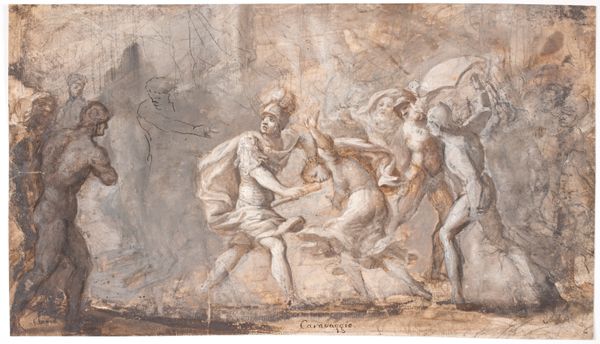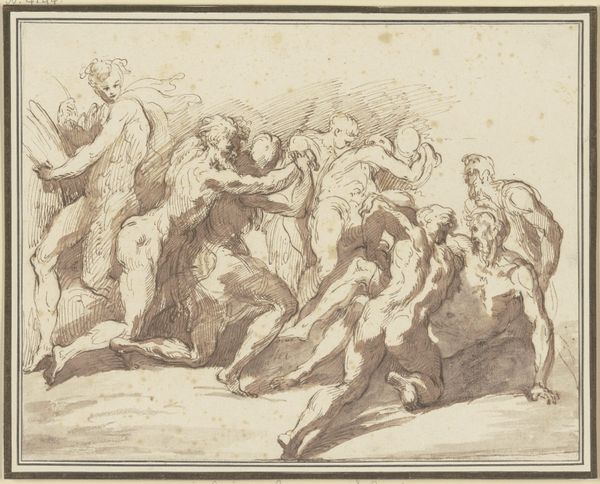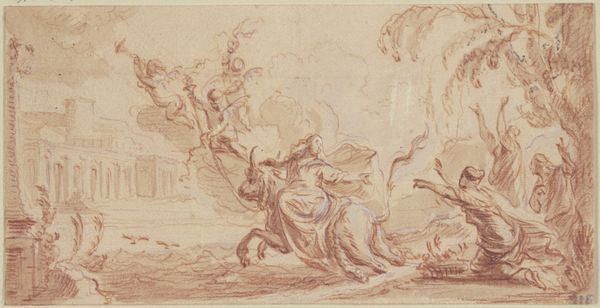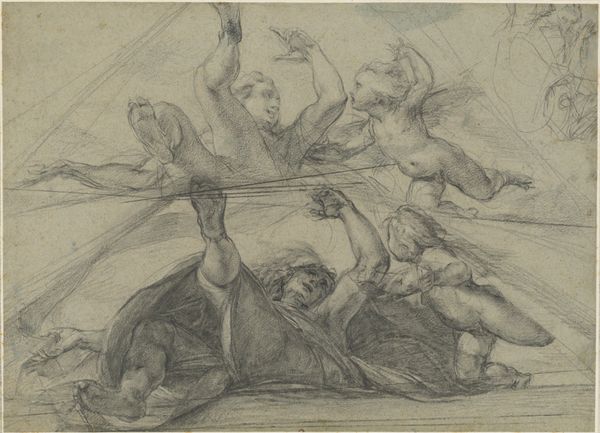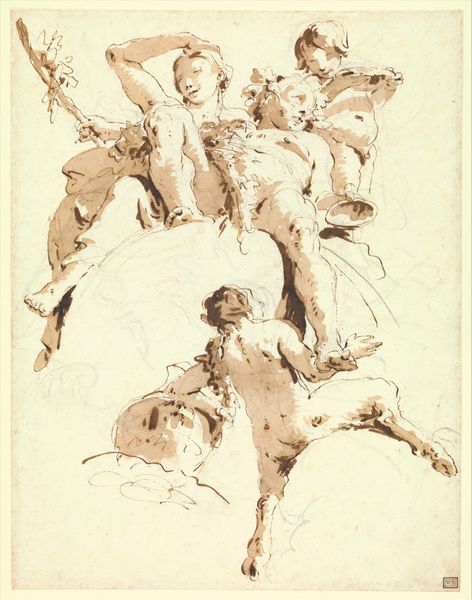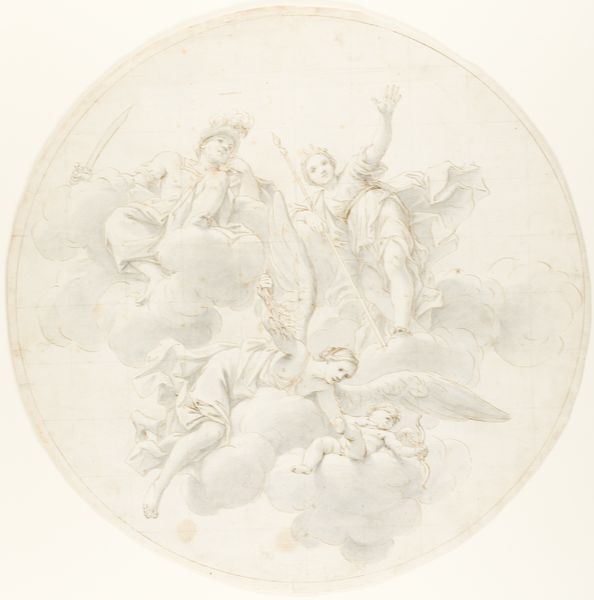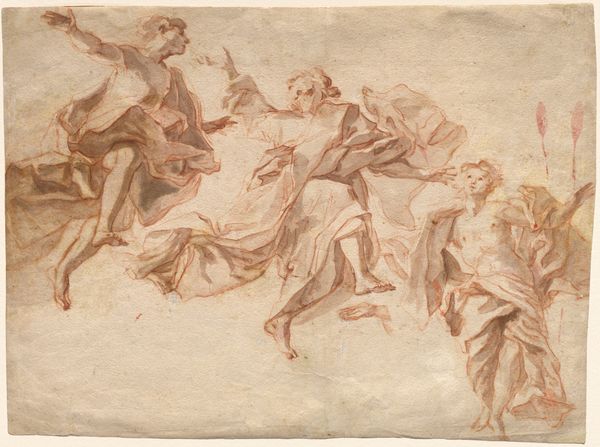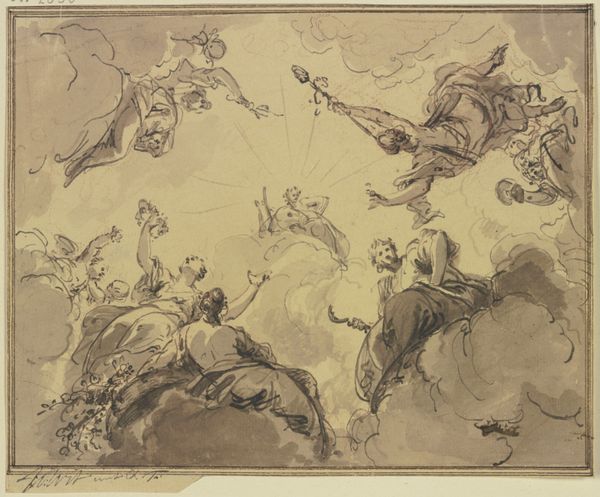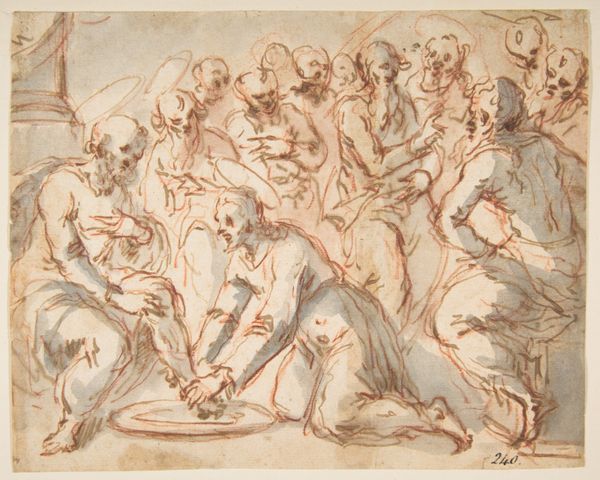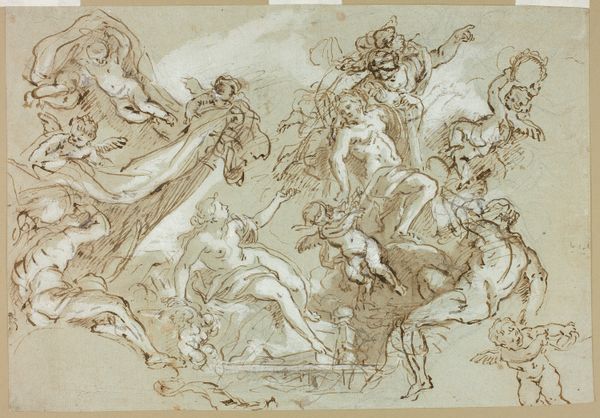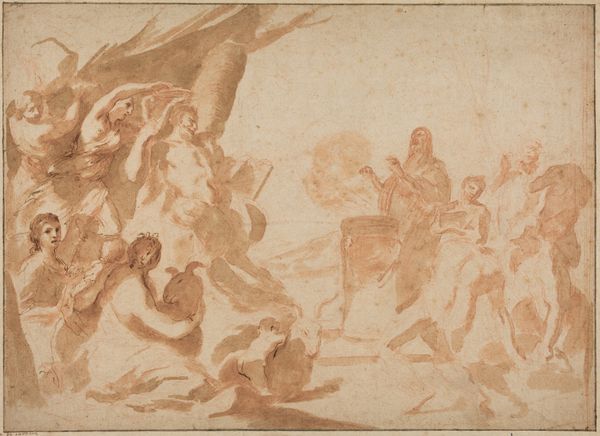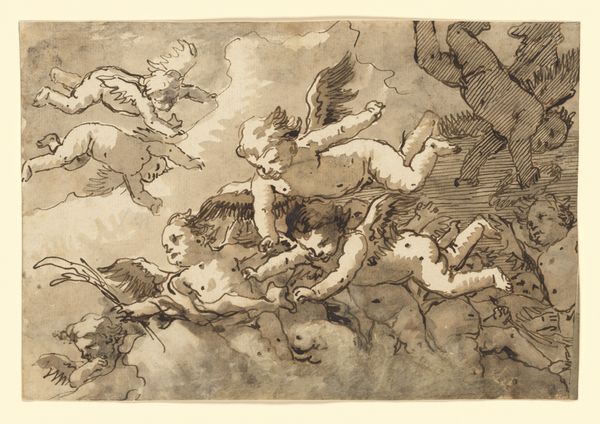
drawing, watercolor
#
drawing
#
water colours
#
narrative-art
#
baroque
#
figuration
#
watercolor
#
history-painting
#
watercolor
Dimensions: 250 mm (height) x 318 mm (width) (bladmaal)
Editor: We're looking at "God Curses Cain," a watercolor drawing by Nicolas Loir, likely created between 1624 and 1679. There's a palpable sense of drama; the stark contrast between the divine figures and Cain's fleeing form is quite striking. What do you make of this piece? Curator: This Baroque drawing presents an opportunity to examine power dynamics and moral judgment. Loir situates the biblical narrative within a socio-political context that reflects the anxieties surrounding justice, divine authority, and societal order of his time. Notice how Cain's posture – the outstretched arms, the hunched back – conveys both defiance and despair. How does this positioning speak to broader narratives of guilt and punishment? Editor: I see what you mean. The body language is very telling, particularly juxtaposed with the serene detachment of God and the angels floating on the clouds. Does the presence of the dog change your reading of it at all? Curator: Absolutely. Animals in art are rarely accidental. Here, the dog may symbolize loyalty betrayed, mirroring Cain's transgression against his brother. Considering that it is beside Cain as God's curse unfolds can speak to class relations during the Baroque Era. In this respect, it becomes crucial to ask: how might period interpretations and assumptions of ‘low-born loyalty’ manifest? Editor: That's a really interesting point. It changes my understanding quite a bit! I hadn't considered the dog in that light before. Curator: Considering the visual language and societal conditions in which this piece came to be only makes it more captivating and open for analysis. These contextual perspectives enrich the work beyond the biblical retelling. Editor: It certainly does! I'll definitely look at Baroque art differently from now on, with a more critical eye. Curator: It's all about encouraging thoughtful dialogue. We must continuously explore how power operates and gets reproduced through cultural expressions.
Comments
No comments
Be the first to comment and join the conversation on the ultimate creative platform.
